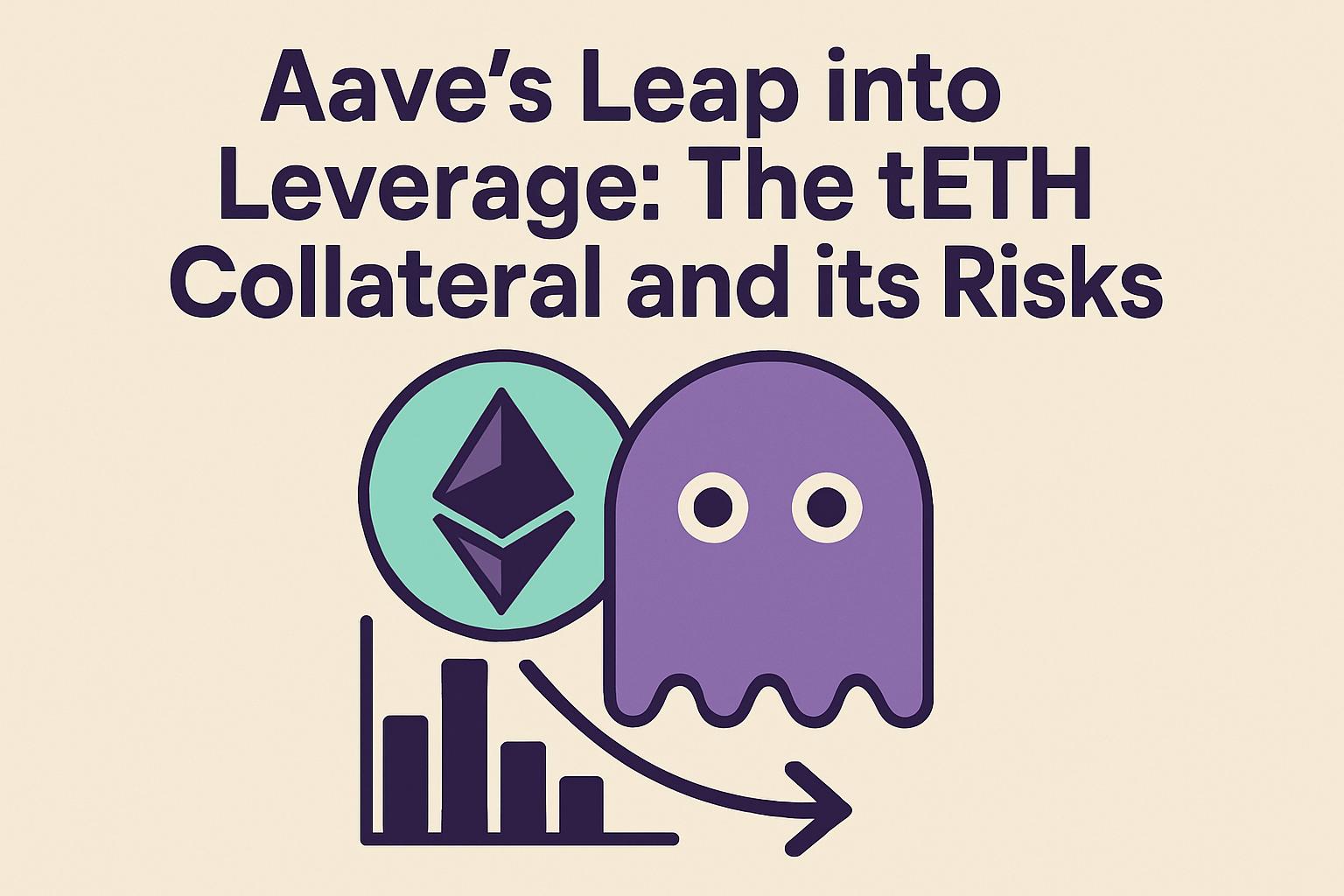In a bold move, Aave has recently integrated Treehouse ETH (tETH) into its core markets as a form of collateral, raising eyebrows across the decentralized finance (DeFi) community. This action introduces a new layer of risk, magnified by the leverage inherent in tETH, a derivative that itself is built on a leveraged staking of ETH. The potential for a cascade of defaults heightens concerns for institutional capital eyeing DeFi integration.
Understanding tETH and Its Leverage Dynamics
Treehouse ETH, better known as tETH, is a product of Treehouse Protocol, a platform boasting a total locked value of $500 million. It relies on Lido’s wrapped staked ETH (wstETH) as its underlying asset, leveraging staking yields through a cycle of loans and deposits to enhance returns. Thus, tETH represents a re-leveraged staked ETH token.
Recently, the Aave community approved a proposal allowing tETH as collateral, facilitating users to leverage their holdings further by borrowing stablecoins. Although the strategy could theoretically amplify returns, the associated risks are palpable and disconcerting.
Delphi Digital analyst Simon cautions, “We’ve witnessed significant losses from minor interest rate shifts before. With liquidity already tight and redemption queues hitting record highs, any further rate volatility might have severe implications.” This integration of tETH into both Aave’s Core and Prime markets effectively nullifies risk isolation, enabling potential credit failures to rapidly ripple across different segments.
Collaborations with Treehouse and Ethena: A Rising Risk Profile for Aave
Aave, a pioneer in the on-chain lending sphere with a total value locked (TVL) of $36.4 billion, has historically been lauded for its asset diversity and liquidity depth. However, increased exposure to synthetic assets and derivatives like those from Ethena and Treehouse has raised its risk curve sharply. This development is attractive to retail investors seeking high yields but less so to traditional institutions demanding stability and risk control.
Despite the allure of Aave’s offerings, institutional capital remains hesitant, seeking avenues in DeFi that align with their stringent risk protocols. This sentiment echoes the cautious stance Aave has adopted regarding integration with traditional finance (TradFi), emphasizing compliance, safety, and risk management as imperatives for cross-pollination.
S&P’s Rating and the Wider Implications for DeFi
S&P Global’s recent assessment of Sky Protocol (formerly Maker) as “B-” underlines the traditional financial system’s high compliance and safety standards. These standards bring forth challenges for DeFi protocols aspiring to bridge with TradFi, where even minor stablecoin fluctuations can be deemed defaults.
While Aave and Treehouse’s foray into high-leverage products may yield short-term gains and draw attention, it simultaneously distances DeFi from institutional acceptance, a gap that must be closed to legitimize the industry in traditional sectors.
The Diverging Needs of Retail and Institutional Investors
The inclusion of tETH as collateral by Aave is a daring experiment intertwining high risk and potential high reward. As the dialogue around DeFi’s potential inclusion in traditional finance intensifies, compliance, safety, and risk management are no longer optional but mandatory. Although the path to TradFi involves stringent prerequisites, successful integration could set a new standard for facilitating traditional capital inflows.

![[News] Bitcoin at a Turning Point? 10x Research Signals a Bullish Macro Shift Ahead](https://cryptoexplores.com/wp-content/uploads/2025/06/new20250616.jpg)
![[News] Binance Lists $HOME, the Gas-Free, Bridge-Free All-in-One DeFi App](https://cryptoexplores.com/wp-content/uploads/2025/06/news20250617.jpg)